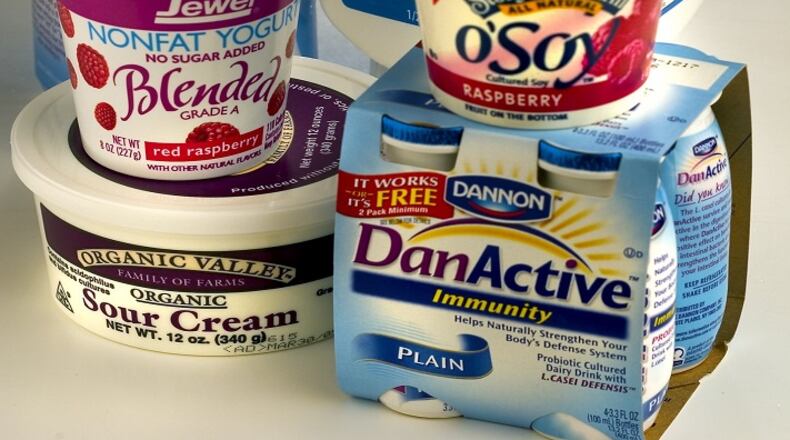Lead researcher Alban Gaultier of the University of Virginia Department of Neuroscience and its Center for Brain Immunology began looking for a link between gut health and depression. He surmised that when stressed, the chance of being depressed increases.
He and his team looked at the composition of the gut microbiome before and after mice were subjected to stress. The team found that the major change was the loss of Lactobacillus. And with the loss came the onset of depression symptoms. Feeding the mice Lactobacillus with their food returned them to almost normal. Even feeding a single strain of Lactobacillus influenced mood.
The researchers determined the amount of Lactobacillus in the gut affects the level of a metabolite in the blood called kynurenine, which has been shown to drive depression. When Lactobacillus was diminished in the gut, the levels of kynurenine went up, and depression symptoms set in.
While mice can't verbalize depression, they can exhibit "depressive like behavior". And the same biological substances and mechanisms Lactobacillus uses to affect mood in mice also are seen in humans, suggesting the effect may be the same.
The bottom line? Have a carton of yogurt when you're feeling blue. It may just make you happy.
Q and A
Q: Are pine nuts a nut or a seed? Should an adult with a severe nut allergy avoid them?
A: Pine nuts are edible seeds of certain species of pine trees and are used in a variety of foods including Italian pesto sauce and pignoli cookies. Pine nuts are evolutionarily separated from flowering plants to which all other nuts belong. There is very little information on potential cross-reactivity between pine nuts and other nuts. (Cross-reactivity happens when the immune system sees similar protein structures in different allergens). One study showed cross-reactivity of pine nuts with peanuts and another showed cross-reactivity of pine nuts with almonds. There are reports of people who had anaphylaxis to pine nuts who are also allergic to other nuts, and there are people who are only allergic to pine nuts but not to tree nuts or peanuts. A recent review in the Journal of Investigational Allergology and Clinical Immunology indicates that the great majority of pine-nut-allergic people do not have nut allergy. Whether pine nuts should be avoided in people who are allergic to other nuts can only be decided by clinical judgement. If tree nut or peanut allergy is severe, and people are motivated to try pine nuts, those individuals can be evaluated by a board-certified allergist using skin prick testing and potentially a supervised oral challenge in the doctor's office. -- Tufts University Heath & Wellness Letter.
RECIPE
Berries are full of nutrients but low in calories and they have significant amounts of fiber, vitamin C, vitamin K, and manganese. Here's a recipe from Cooking Light magazine that celebrates summer and is low in fat.
Strawberry-Blueberry Cheesecake
2 cups graham cracker crumbs
1/4 cup unsalted butter, melted
2 tablespoons sugar
1/2 teaspoon ground cinnamon
Cooking spray
2 (8-ounce) blocks fat-free cream cheese, softened
1 (8-ounce) block 1/3-less-fat cream cheese, softened
1 cup sugar
1 cup fat-free sour cream
2 teaspoons grated lemon rind
1 teaspoon vanilla extract
3 large eggs
Topping:
3/4 cup fresh blueberries
3/4 cup sliced fresh strawberries
2 tablespoons sugar
1 tablespoon grated lemon rind
3 tablespoons fresh lemon juice
3/4 cup strawberry preserves
Preheat oven to 325. To prepare crust, combine crumbs, melted butter, 2 tablespoons sugar, and cinnamon in a medium bowl. Wrap 2 layers of foil around bottom and outside of a 9-inch springform pan; coat inside of pan with cooking spray. Firmly press crust mixture into bottom and 1/2 inch up sides of pan. Bake at 325 for 10 minutes. Cool completely on a wire rack. To prepare cheesecake, place cheeses in a large bowl; beat with a mixer at medium speed until smooth. Add sugar and next 3 ingredients (through vanilla); beat well. Add eggs, 1 at a time, beating well after each addition. Pour cheesecake batter over cooled crust. Place springform pan in a shallow roasting pan; add enough hot water to come halfway up sides of springform pan. Bake at 325 for 1 hour and 20 minutes or until center barely moves when pan is touched. Remove cheesecake from oven; run a knife around outside edge. Cool to room temperature. Cover and chill at least 8 hours. To prepare topping, combine berries, sugar, lemon rind, and lemon juice in a small bowl; let stand 30 minutes. Spread preserves over top of cheesecake; top with fruit mixture. Serves 14 (serving size, 1 slice).
About the Author

